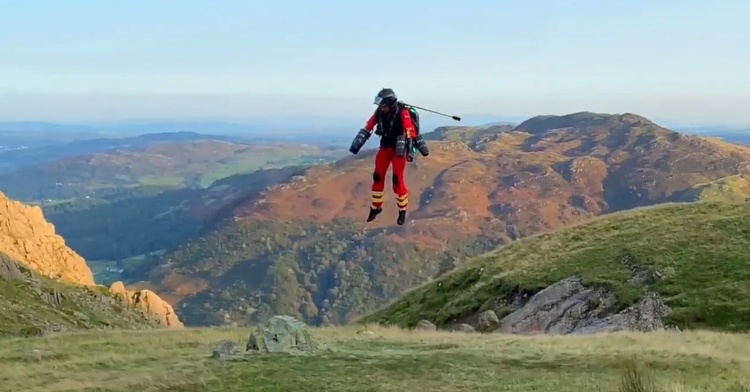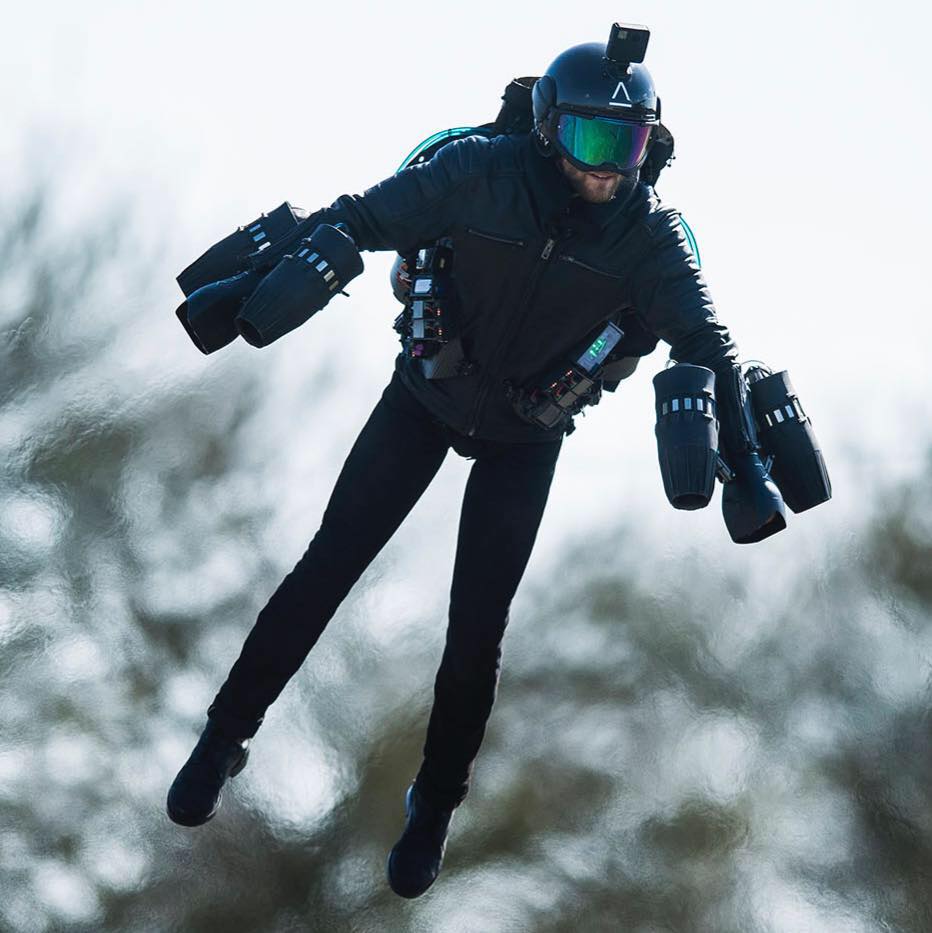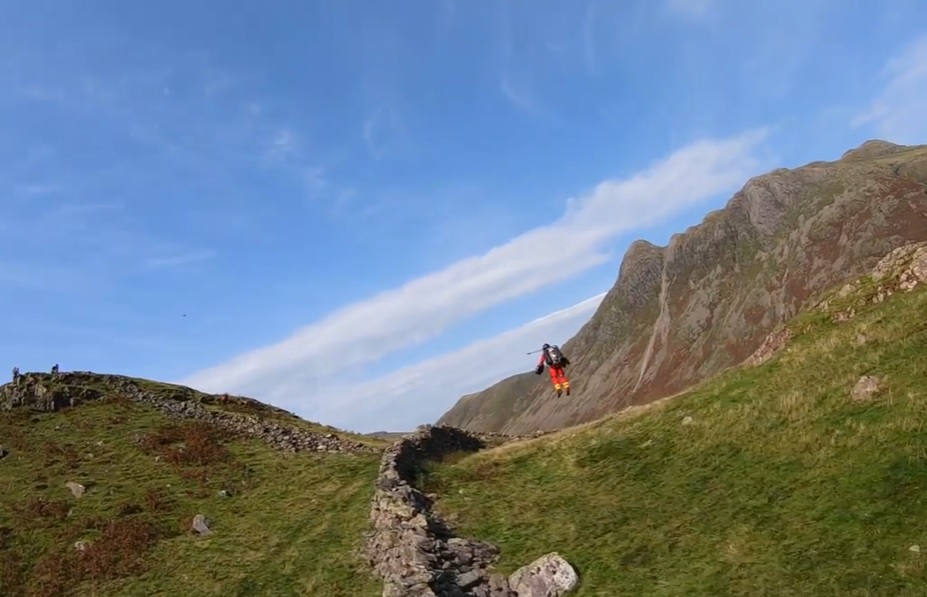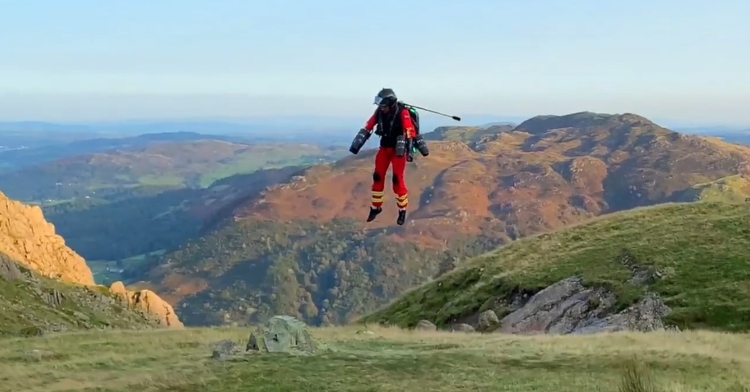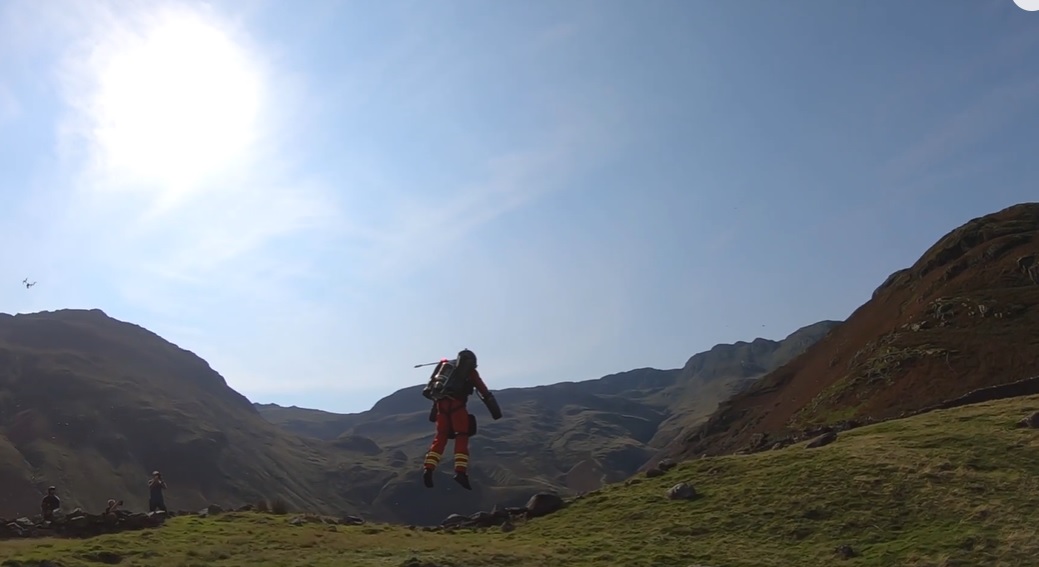It’s a bird! It’s a plane! Nope… it’s a paramedic.
If you’ve ever looked at a mountain and wondered what it would be like to reach the summit in just a few minutes, we’ve got some good news for you. Thanks to a British company called Gravity Industries, we’re closer to experiencing human flight than ever before.
For the past few years, Gravity has been working on a jetpack prototype that they hope will revolutionize emergency services worldwide. Their latest field tests have been incredibly encouraging, and they hope to deploy jetpacks all over the world to help save lives.
“Back in 2016, I hatched this unusual vision of ‘Could you reimagine how human beings could fly?'” said Gravity Industries founder and chief test pilot Richard Browning.
Jetpacks are currently run with diesel, jet fuel, bio-diesel, or bio-jet fuel. They’re waiting for electric battery technology to evolve so they can eventually switch over to electric power, but for now, electric batteries are too large to use. Each jetpack has 1,000 horsepower thrusters strapped to the pilot’s back, and two small jet engines on each arm to stabilize the unit.
Just about anyone can learn to use these jetpacks. So far, the company has trained 500 pilots, most of whom mastered the craft in less than a day.
Recently the Gravity jetpack was put to the test when Jamie Walsh, a paramedic for The Great North Air Ambulance Service, used one to ascend the third highest peak in the United Kingdom’s Lake District. Mount Helvellyn is 3,117 feet above sea level. Normally it would take a paramedic one hour and 20 minutes to hike to the summit. Instead, Jamie was able to reach an injured hiker in just three minutes and 30 seconds!
“If you’re a cardiac patient or somebody that really needs critical care, one hour 20 minutes is often too long for really important cases,” Richard said. “We can get a trained professional very quickly to the side of a casualty in very difficult weather or very difficult physical terrain in a way that often [rescuers] on foot, or a vehicle or a helicopter can’t do.”
The next step is to test out jetpacks in other emergency situations, including avalanches! We weren’t sure we’d see this sort of technology in our lifetimes, but these incredibly innovative products have the potential to save lives.
Watch the video below to see these amazing jetpacks in action, and don’t forget to share.
Want to be happier in just 5 minutes a day? Sign up for Morning Smile and join over 455,000+ people who start each day with good news.



